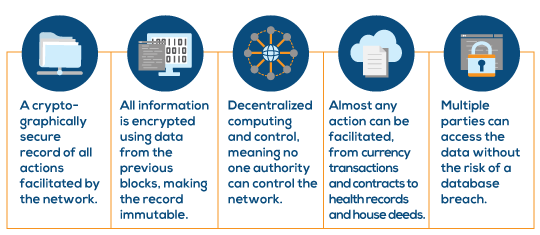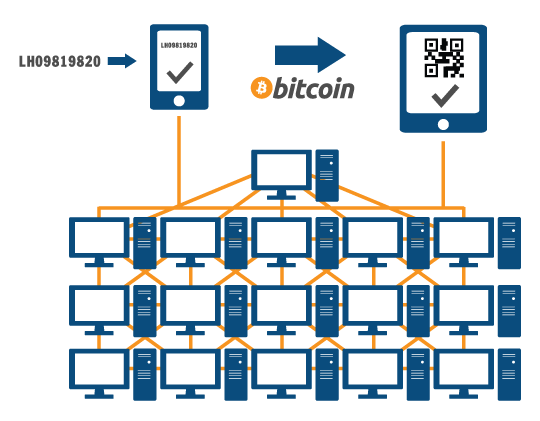Blockchain Basics
The blockchain was first conceptualized and developed by the creator of Bitcoin: Satoshi Nakamoto. Bitcoin was the first implementation of this type of data structure, and since its inception, Bitcoin has inspired a revolution in how people think about data storage and network integrity. Since the birth of blockchain, the sheer volume of use-cases for blockchain technology has grown exponentially and blockchain is beginning to be implemented and experimented with across a multitude of industries. As it turns out, it wasn’t Bitcoin specifically that intrigued people but the concept of blockchain in its entirety that turned heads. The rise of Ethereum (a decentralized blockchain-based supercomputer) and continued popularity of Litecoin (the silver to Bitcoin’s gold) serve as a testament to the growing momentum of the blockchain movement.
What is a blockchain anyway?
The blockchain is a distributed, cryptographically secure, and immutable record of all transactions facilitated by the system. Each new block on the blockchain is encrypted using the “hash” (a unique combination of characters) from the previous block, making it such that an immutable sequence of events is created and verified in real time. Thus, if any single node tampers with the record, it would be easily recognized by the rest of the network nodes, all of whom have the complete record of the blockchain’s history. Essentially, the blockchain is an inherently secure data structure that records transactions and all relevant information in a fashion that makes it impossible to add/remove or alter any of the information in the blockchain without detection.

On the Bitcoin blockchain for example, if you make a transaction on the Bitcoin network not only will you and the receiver record the transaction, each node on the network will make a record of the transaction between your address and the receiver’s address. This the concept underlying the “distributed ledger”.
This transaction becomes a part of a block along with numerous other transactions. Once the block is full according to the specifications of the blockchain implementation, the block is chained to the end of the blockchain to be stored and recorded immutably on every computer on the network.
What is the point of a distributed ledger?
It is arguable that the most critical aspect of blockchain technology lies in the decentralized/distributed nature of the database. The decentralized nature of blockchain technology ensures that every part of the network is working together to conserve the integrity of the blockchain’s historical record. Since every computer on the network is continuously checking each transaction and block created, it becomes incredibly difficult for somebody to “crack” the network and gain control of the blockchain. Additionally, the decentralized nature of blockchain applications like Bitcoin has the consequence of decentralized control. Unlike fiat currencies, no one entity can suddenly choose to inflate the outstanding supply or manipulate the unit by which an individual’s value is held. As Bill Gates said, “Nobody can stop Bitcoin” and no one entity can truly control it.

Currently, it is hypothesized that the only way to acquire control over the network would be to execute a “51% Attack”. A “51% Attack”, where one entity controls over 50% of the network’s “hashrate” or computing power, is theoretically the only way to gain control of and alter the blockchain infrastructure. Although the attack is very much hypothetical, it has been proven to be mathematically impossible to take control of the network without having more than half of the total computing power.
Why should you care?
Blockchain technology gives power to the people. Currently, individuals are subject to the will of controlling entities and do not have complete freedom in access and control of their wealth having to abide by the rules, rates, and decisions deemed appropriate by others whose interests may not align with their own. Through various implementations of blockchain like Bitcoin, Ethereum, and Litecoin, individuals are privy to complete control of their wealth and are able to enjoy true personal freedom. Decentralized blockchain implementations like the aforementioned networks are truly disruptive technologies. They allow the unbanked access to a means of personal finance no matter the user’s socioeconomic status or location and will undoubtedly have massive ramifications worldwide.
3iQ is a Canadian Investment Fund Manager focused on providing innovative investments of institutional quality in disruptive technologies and the cryptoasset space. Founded in 2012, 3iQ is committed to a disciplined approach to investment selection aided by the most innovative due diligence process and quantitative techniques. Please visit www.3iq.ca to learn more.
When thinking about using blockchain: timing is key for a business! Try Facebook in 1994 and with a good idea you go bankrupt. Try blockchain for twice in a lifetime real estate deals when most people not even once used it for payments...
Timing is important. Just a thought.

(Nice picture, 5arah! Join us at Steemit and we'll vote you up!)
Congratulations @philipgenekwak! You received a personal award!
You can view your badges on your Steem Board and compare to others on the Steem Ranking
Vote for @Steemitboard as a witness to get one more award and increased upvotes!